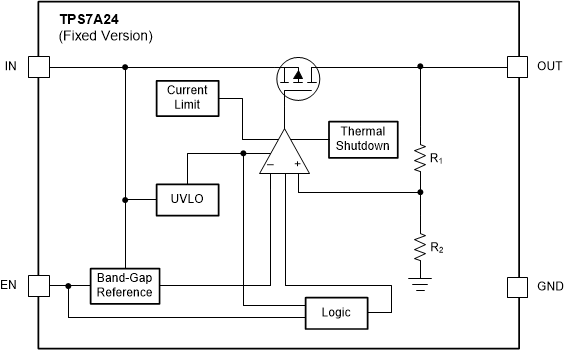TIDUF52 December 2023 MSPM0L1303 , MSPM0L1304 , MSPM0L1305 , MSPM0L1306 , MSPM0L1343 , MSPM0L1344 , MSPM0L1345 , MSPM0L1346
- 1
- Description
- Resources
- Features
- Applications
- 6
- 1System Description
- 2System Overview
- 3Hardware, Software, Testing Requirements, and Test Results
- 4Design and Documentation Support
- 5About the Author
2.3.3 TPS7A24
The TPS7A24 is an 18-V, low quiescent current, low-dropout (LDO) linear regulator. The low IQ performance makes the TPS7A24 an excellent choice for battery-powered or line-power applications that are expected to meet increasingly stringent standby-power standards. The fixed-output versions have the advantage of providing better accuracy with fewer external components, whereas the adjustable version has the flexibility for a far wider output voltage range.
The 1.25% accuracy over temperature makes this device an excellent choice for meeting a wide range of microcontroller power requirements.
For increased reliability, the TPS7A24 also incorporates overcurrent, overshoot pulldown, and thermal shutdown protection. The operating junction temperature is –40°C to +125°C, and adds margin for applications concerned with higher working ambient temperatures.
 Figure 2-17 TPS7A24 Fixed Version Block Diagram
Figure 2-17 TPS7A24 Fixed Version Block Diagram